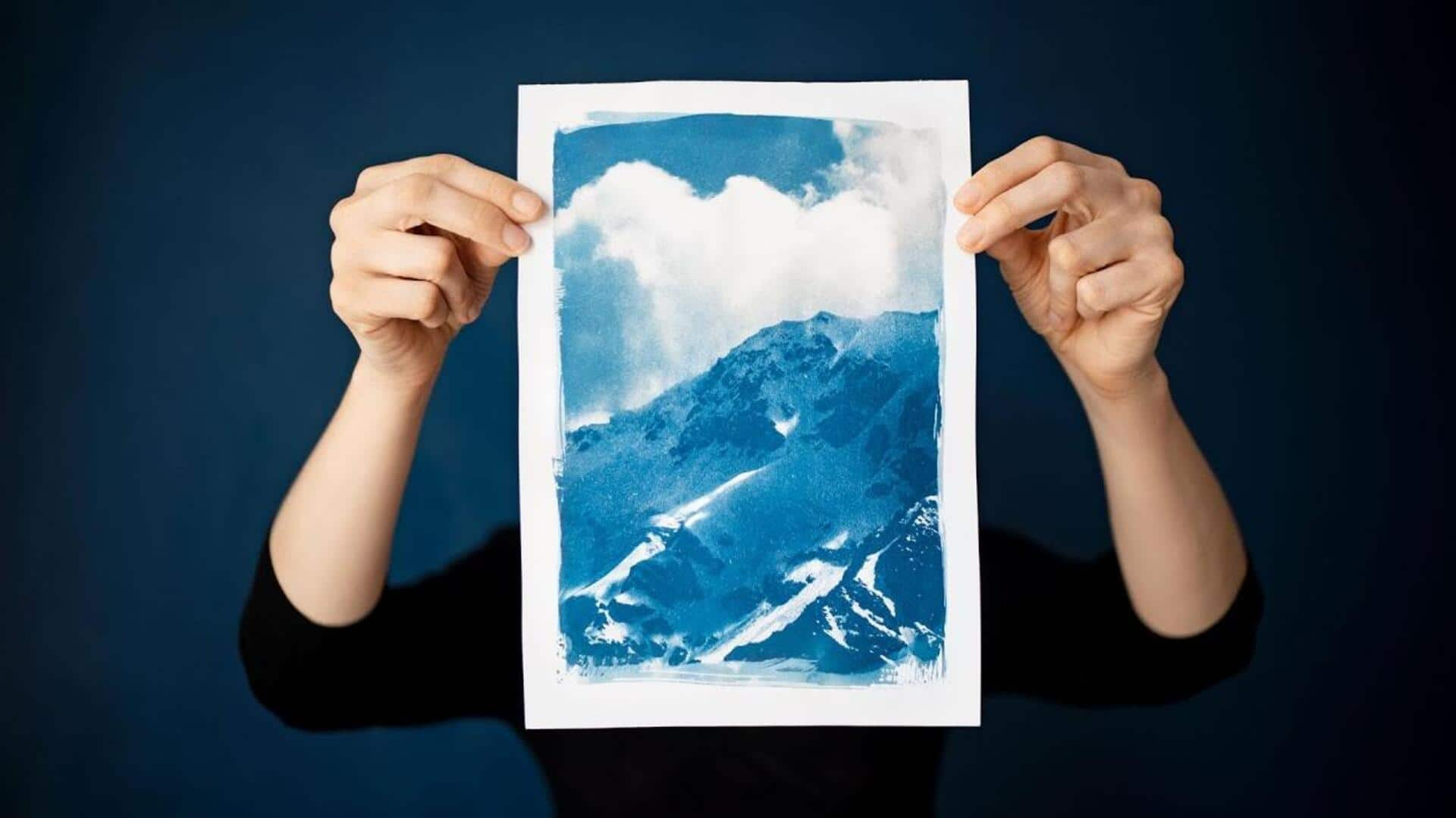
Rediscovering the magic of cyanotype photography
What's the story
Cyanotype photography, a process dating back to the 1840s, offers a unique blend of science and art. This method involves using two chemicals to create a light-sensitive solution that turns a distinctive cyan-blue when exposed to sunlight. Despite its age, cyanotype photography remains popular among enthusiasts for its simplicity and the ethereal quality of its prints.
Getting started
The basics of cyanotype process
To initiate cyanotype photography, you need potassium ferricyanide and ferric ammonium citrate. Mix these chemicals in equal parts and apply them to paper or fabric, creating a light-sensitive coating. The process involves exposing the coated material under UV light or direct sunlight with a negative or object placed on top. Following exposure, washing off the unexposed solution reveals the final image.
First steps
Crafting your first print
Creating your first cyanotype print involves selecting an object or negative that will block sunlight and leave an imprint on your coated paper or fabric. Leaves, flowers, or even hand-drawn negatives on transparency sheets work well for beginners. After exposure to sunlight for about 15-20 minutes, depending on the intensity of light, rinse your print in water to reveal the iconic blue image.
Creative exploration
Experimenting with tones and textures
While traditional cyanotype prints are known for their blue hues, adding certain substances can alter these tones. For instance, washing your print in a diluted solution of vinegar or tea can change its color to varying shades of gray and brown. Experimenting with different materials as bases, like wood or canvas, can also introduce interesting textures into your artwork.
Beyond basics
Advanced techniques in cyanotype photography
For those eager to advance their cyanotype skills, using digital negatives can significantly enhance the control over print contrast and detail. This technique involves adjusting an image's brightness and contrast levels before printing it onto transparency film. It allows for the creation of more complex designs and detailed photographs, offering a sophisticated alternative to traditional cyanotype methods.
Longevity tips
Preserving your cyanotype prints
To ensure the longevity of your cyanotype prints, it's crucial to thoroughly rinse them after exposure. This step removes any unreacted chemicals completely. Using acid-free paper is essential to prevent degradation over time. Additionally, storing your prints away from direct sunlight is vital. It helps in maintaining their vibrant blue tones for many years to come, preserving the beauty of your artwork.